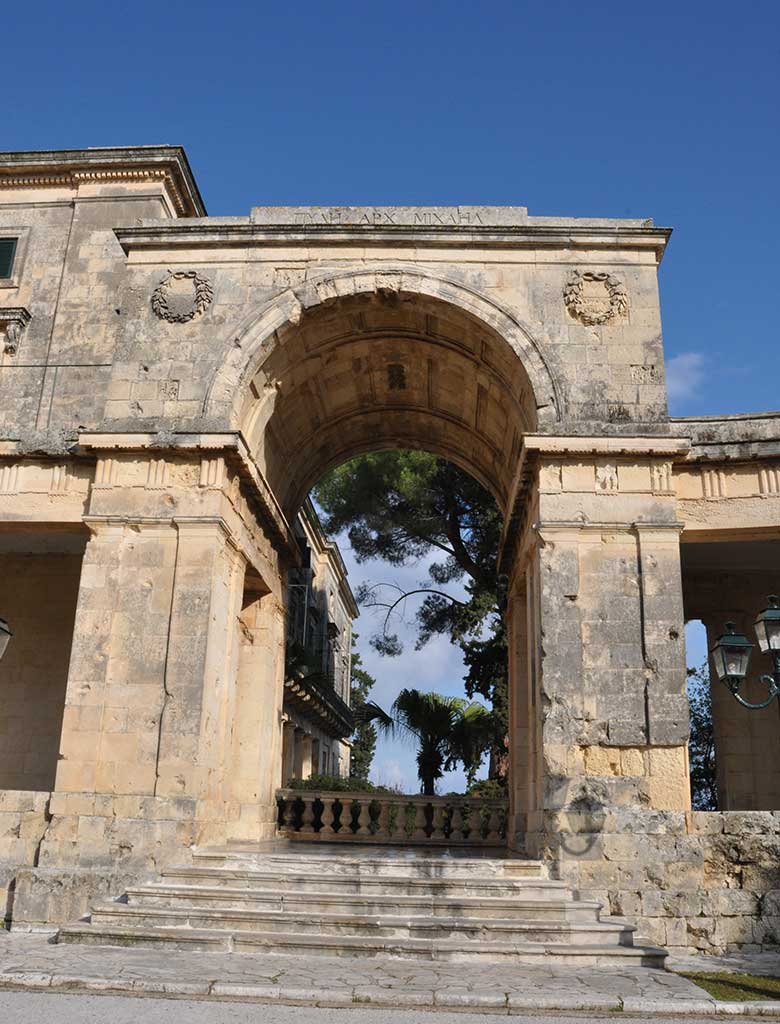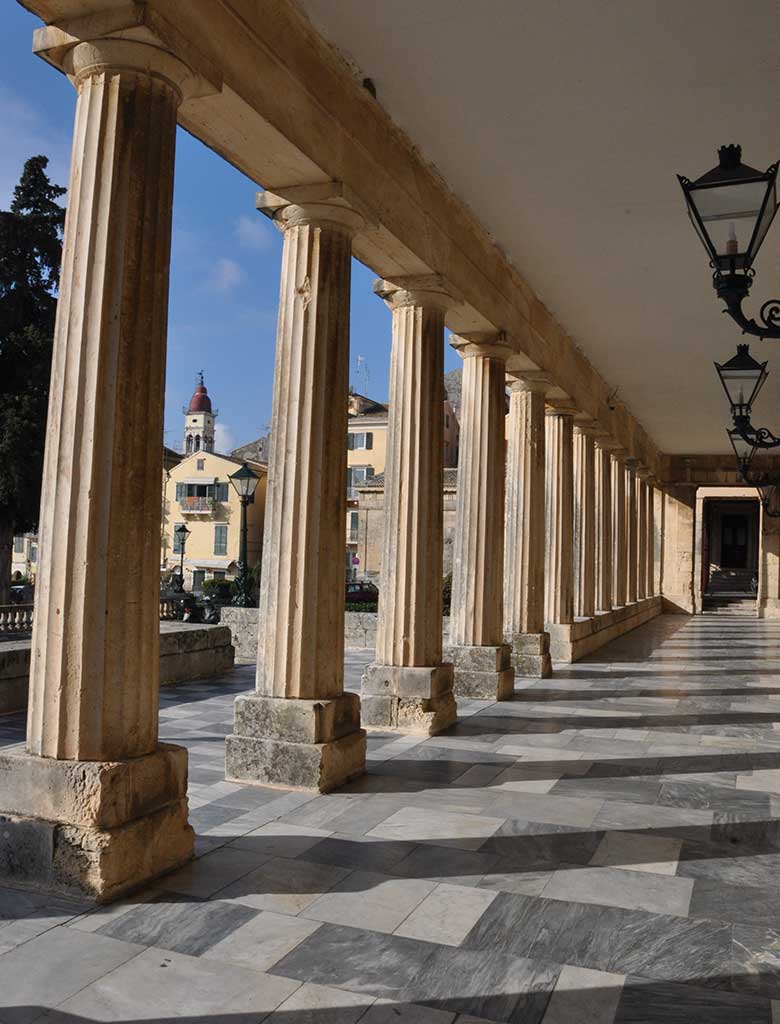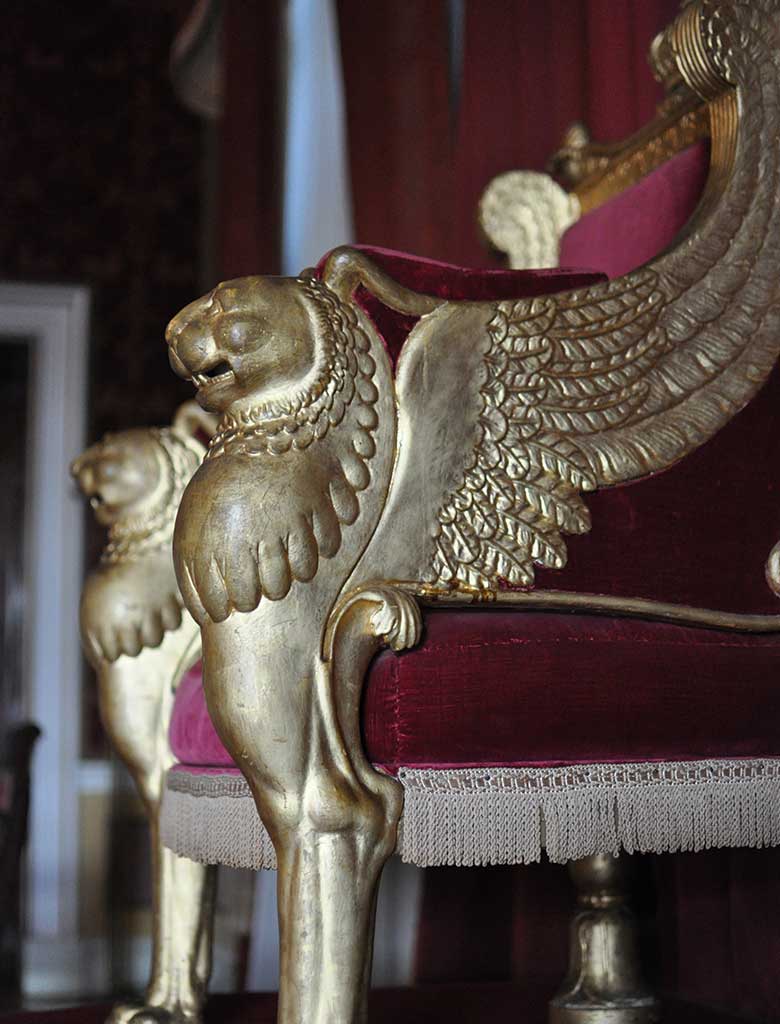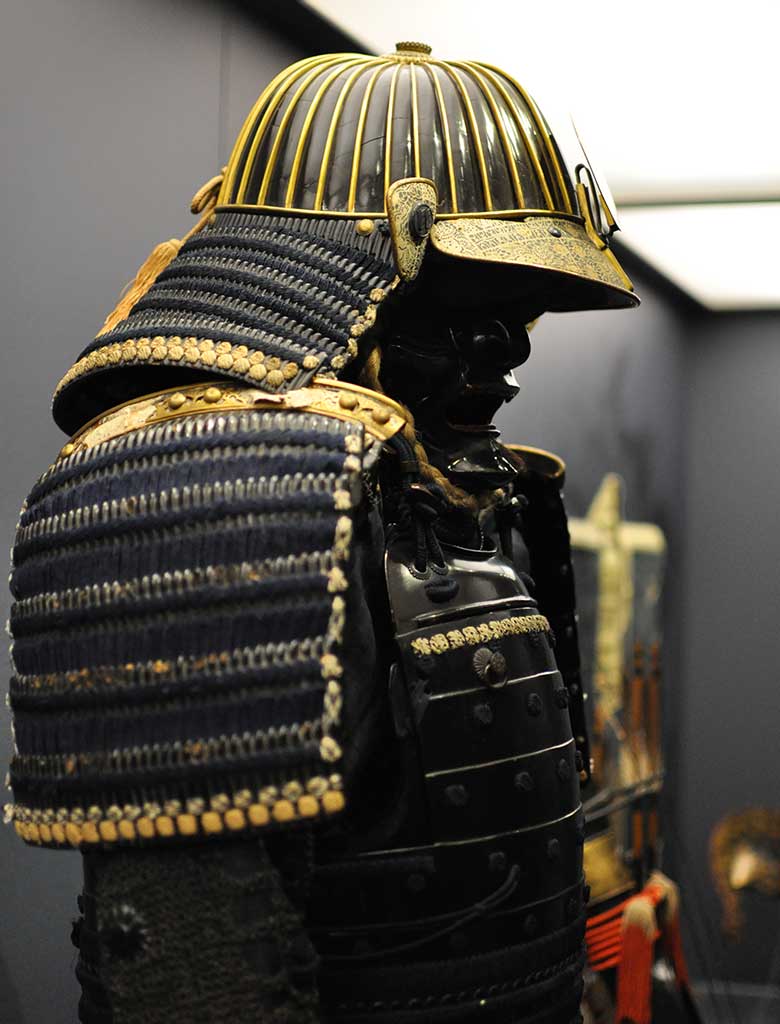The Palace History
St Michael & St George Palace

1815 -1864
1815 -1864
during the period of the Ionian State
The Palace
It is the largest and the most significant building of the Ionian State period, which started in 1815 and ended in 1864 when the Ionian Islands were unified with the rest of Greece. It was built at the request of the then British Lord High Commissioner, Sir Thomas Maitland, to become his own luxurious residence and to house the High Commissioner’s administrative headquarters, which was until then located in the Old Fortress. The same building complex would also house the Ionian Senate and the Ionian Parliament, the two institutional bodied which symbolized the Ionian Islands’ autonomy.
1818 - 1819
1818 - 1819
Following the architectural styles of the era: Monumentality and classicism
Palace
The construction of this building, was commissioned to Sir George Whitmore, British army engineer and architech, who designed a neoclassical, Regency style building. Following the principles of neopalladianism and the revival of ancient Greek art which were prevalent in England, he created and amalgam of Roman and Ancient Greek architecture. At the same time, the Palace would serve as the seat of the newly founded Most Distinguished Order of Saint Michael and Saint George, which was established in 1818 at Maitland’s initiative, after which is was officially named “Palace of Saint Michael and Saint George”.
1819 -1823
1819 -1823
Architecture & Sculpture
Whitmore & Prosalentis
The architect’s collaboration with the notable Corfiot sculptor Pavlos Prosalentis on the Palace decoration was quite valuable. Whitmore found in Pavlos Prosalentis, a local architect and gifted sculptor, an ideal collaborator, who undertook completely the sculpted decoration. While the works were taking place, Maitland ordered Whitmore to increase the spaces of the palace, in order to satisfy the pressure of the Corfiots Ionian citizens for a more impressive building; the result was a larger, in volume and surface, building. Philip Petritsopoulos and Giovanni Batista Parmazan, Heptanesians military engineers and architects in Corfu since the end of the 18th century, participated at the construction of the palace and undertook the task of controlling its building material. In the course of the construction of the palace, made by specially imported Maltese stone, the Maltese artisans were aided by local workers.
1864-1918
1864-1918
from the Unification until today
The Palace
In 1864, with the Unification of the Ionian Islands with Greece, the Hellenic state appropriated a building, the size of which was only surpassed by King Otto’s Palace (currently housing the Hellenic Parliament). Until 1913, it was used as residence of the then royal family whenever they visited the island. On the first floor, to the east and the west of the monumental halls, were the King’s and Queen’s chambers respectively. Impressive English and French pieces of furniture, artful lamps, tapestries, china, works of art and oriental carpets all put together the Palace’s luxurious decoration. The twelve rooms of the second floor were intended for the royal guard, while the basement for the domestic workers. The tumultuous historical conjecture of the Balkan Wars (1912-14) and World War I (1914-18) brought upon a new change in the building’s use. The Palace was chosen to meet the urgent needs of the period between the Wars.
1919 - Today
1919 - Today
The Museum of Asian Art Corfu
Foundation
However, from as early as 1919, negotiations were underway for the creation of the first (and still by today unique) Museum of Asian Art in Greece. The new museum would be housed in the Corfu Palace, built around the collection-donation of Gregorios Manos. The building was extensively damaged during World War II (1939-45), with the bombing of its roof and the looting of pieces of furniture and works of art, as well as during the Greece Civil War (1946-49), when the Banquet Hall was burnt to a cinder. It was partially repaired in the ‘50s, focusing mainly on the monumental halls . From 1992 until 1994, the exterior masonry was repaired as well as the interior and its infrastructures were, as the Palace would host the 1994 European Union Summit Meeting in Corfu. Since then, the Museum of Asian Art has been including in the re-exhibition of its collections and the conservation, restoration and promotion of the Palace history.
1823
1823
Seat of the Most Distinguished Order of

